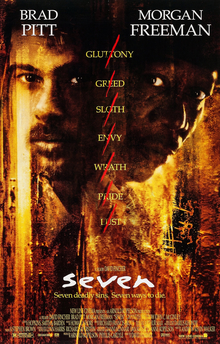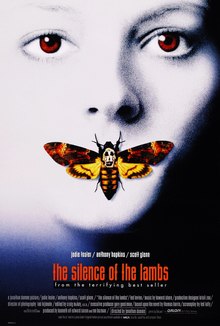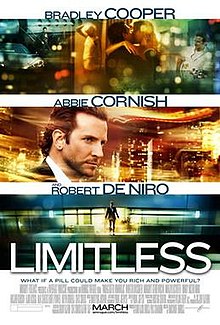I have done quite a bit of research on the thriller genre. I looked at different films (the iconic ones, the famous ones and the less known ones) and their directors and I looked how it changed over the time. I found that the thriller genre started introducing different sub-genres with time, starting with psychological thrillers, crime thrillers, romantic thrillers all the way to action and horror thrillers. I looked at iconic directors and the famous movies they have made and how they influenced other directors into writing/directing their own. This research will help me and my group to decide on what theme/sub-genre to pick for our thriller opening sequence and maybe also, if we look at different directors and their particular films, we might find some techniques and ways to make the thriller opening more effective, therefore it would help us to create a better piece.

 Thriller genre was becoming quite popular at the beginning of 1920's to 1940's. Alfred Hitchcock was one of thee main directors that played a huge part in the development of the thriller genre. In 1929, the master of thriller, Alfred Hitchcock has directed and produced his first sound film called “Blackmail”. Another early but significant film of the 1930's this time was a German film based on the life of a serial killer Peter Kurten. Film was called simply “M” and was directed by Fritz Lang in 1931. It is easy to tell that Hitchcock was the major influence for the thriller genre to grow because the number of recognisable and famous films he directed such as: “The Man Who Knew Too Much” (1934), “The 39 Steps” (1935) which was his first romantic thriller “Rebecca” (1940), which was nominated for Oscar Awards, Saboteur (1942) and “Shadow of a Doubt” (1943) -based on a real life story of a serial killer from the 1920's Alfred Hitchcock first successful films, many other directors were inspired and influenced and created their own thriller such as: the psychological thriller “Gaslight” (1944) directed by George Cukor. As well as “The Spiral Staircase” by Robert Siodmak (1946) and “The Third Man” (1949) by Carol Reed (introducing the film noir).
Thriller genre was becoming quite popular at the beginning of 1920's to 1940's. Alfred Hitchcock was one of thee main directors that played a huge part in the development of the thriller genre. In 1929, the master of thriller, Alfred Hitchcock has directed and produced his first sound film called “Blackmail”. Another early but significant film of the 1930's this time was a German film based on the life of a serial killer Peter Kurten. Film was called simply “M” and was directed by Fritz Lang in 1931. It is easy to tell that Hitchcock was the major influence for the thriller genre to grow because the number of recognisable and famous films he directed such as: “The Man Who Knew Too Much” (1934), “The 39 Steps” (1935) which was his first romantic thriller “Rebecca” (1940), which was nominated for Oscar Awards, Saboteur (1942) and “Shadow of a Doubt” (1943) -based on a real life story of a serial killer from the 1920's Alfred Hitchcock first successful films, many other directors were inspired and influenced and created their own thriller such as: the psychological thriller “Gaslight” (1944) directed by George Cukor. As well as “The Spiral Staircase” by Robert Siodmak (1946) and “The Third Man” (1949) by Carol Reed (introducing the film noir). 
 In 1950's, Hitchcock made some of his first and most famous films such as: “Strangers on the train” (1951), “Rear Window” (1954) and Vertigo (a psychological thriller (1958)). Hitchcock started the wave of new thrillers coming into the film industry: Henry Hathaway directed a film in 1953, called "Niagara" -which would fall under film noir sub-genre. Hitchcock made a film to become one of the most famous ones he ever made called: “Psycho” in 1960. That encouraged other directors to make films similar to that, also because it was released just after the erosion of Production Code in United States of America. Films such as: “Peeping Tom” (produced in the same year as Hitchock's “Psycho”, 1960) was a psychological thriller as well. Also that led Roman Polanski -a French-Polish director- to create a psychological thriller, and a first English-language film of his -called “Repulsion” (1965), which is described as “surrealistic” and “frightening”.
In 1950's, Hitchcock made some of his first and most famous films such as: “Strangers on the train” (1951), “Rear Window” (1954) and Vertigo (a psychological thriller (1958)). Hitchcock started the wave of new thrillers coming into the film industry: Henry Hathaway directed a film in 1953, called "Niagara" -which would fall under film noir sub-genre. Hitchcock made a film to become one of the most famous ones he ever made called: “Psycho” in 1960. That encouraged other directors to make films similar to that, also because it was released just after the erosion of Production Code in United States of America. Films such as: “Peeping Tom” (produced in the same year as Hitchock's “Psycho”, 1960) was a psychological thriller as well. Also that led Roman Polanski -a French-Polish director- to create a psychological thriller, and a first English-language film of his -called “Repulsion” (1965), which is described as “surrealistic” and “frightening”. 
 In 1970's and 1980's more violent thrillers became popular amongst directors. Hitchcock was one of the first ones, again, to produce such film with the one called “Frenzy” in 1972, which was about a serial killer who raped and strangled women to death, based in London. As Hitchcock is known to be the master of the thriller genre, a lot of directors got highly influenced by him. One of those directors, was Brian De Palma, whose films significantly suggested Hitchcock's influence on him. One of the main influences was killing the main character in the film nearly from the start, rapidly changing points of views in the film and sequences to be described “dream-like”. De Palma often more or less smoothly reconstructed scenes from other films and his favourite themes were guilt, paranoia and obsession. Such as the psycho-thriller called “Sisters” from 1973, “Obsession” (1976), which is thought to be highly influenced by Hitchock's “Vertigo”. De Palma also made an erotic thriller called “Body Double” in 1984, which was telling a story of an actor who got involved in a lot of mystery and intrigue with his erotic, next-door “body double” neighbour.
In 1970's and 1980's more violent thrillers became popular amongst directors. Hitchcock was one of the first ones, again, to produce such film with the one called “Frenzy” in 1972, which was about a serial killer who raped and strangled women to death, based in London. As Hitchcock is known to be the master of the thriller genre, a lot of directors got highly influenced by him. One of those directors, was Brian De Palma, whose films significantly suggested Hitchcock's influence on him. One of the main influences was killing the main character in the film nearly from the start, rapidly changing points of views in the film and sequences to be described “dream-like”. De Palma often more or less smoothly reconstructed scenes from other films and his favourite themes were guilt, paranoia and obsession. Such as the psycho-thriller called “Sisters” from 1973, “Obsession” (1976), which is thought to be highly influenced by Hitchock's “Vertigo”. De Palma also made an erotic thriller called “Body Double” in 1984, which was telling a story of an actor who got involved in a lot of mystery and intrigue with his erotic, next-door “body double” neighbour. 
 Towards more recent times, many psychological thrillers gained the fame. The ones telling stories of people affected by obsession, mental illnesses, violence and revenge mostly. In 1990, Rob Reiner made a film based on a Stephen King's book. The film was called “Misery” (psychological thriller). Another very famous and very controversial film of 1990's was “The Silence of The Lambs”, which was a crime thrilled directed by Jonathan Demme. Another crime thriller -very popular as well – was “Se7en” (1995) by David Fincher.
Towards more recent times, many psychological thrillers gained the fame. The ones telling stories of people affected by obsession, mental illnesses, violence and revenge mostly. In 1990, Rob Reiner made a film based on a Stephen King's book. The film was called “Misery” (psychological thriller). Another very famous and very controversial film of 1990's was “The Silence of The Lambs”, which was a crime thrilled directed by Jonathan Demme. Another crime thriller -very popular as well – was “Se7en” (1995) by David Fincher. In the last decade, most thriller films still are influenced by other films from previous times, like the classics from Hitchcock or David Fincher. However, thriller film directors start to use aspects of other films such as horror, action or science-fiction (super-natural thriller sub-genre) in order to avoid repetition and lose their originality.



No comments:
Post a Comment